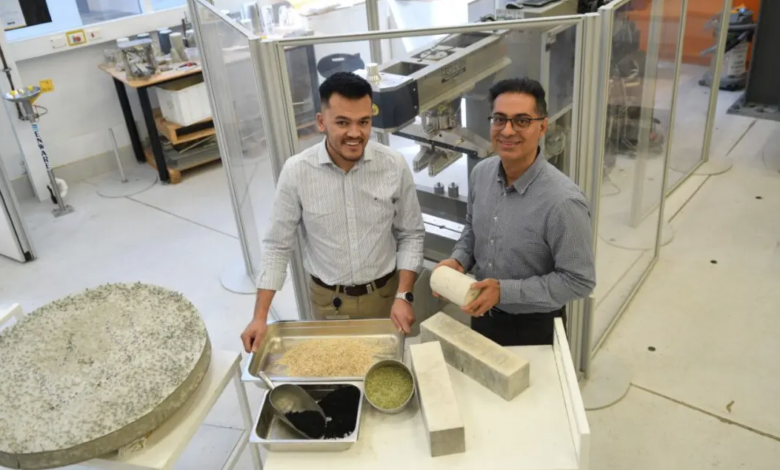Sustainable concrete thanks to lead melting waste: the results of the Australian study

More than 25 billion tons of concrete are used globally each year
(sustainabilityenvironment.com) – Geopolymers reinforced with renewable natural fibers and sand produced with industrial waste, could be the recipe for sustainable concrete.
The engineers at Flinders University in Australia are conducting research on one of the most environmentally and energy-impacting materials. Led by Aliakbar Gholampour and with the external support of experts from the United States and Turkey, the researchers tried to replace synthetic reinforcement materials commonly used in the production of concrete, natural fibers or residues of different processes.
Conventional concrete has a devastating impact on the environment. Being the most used material in construction, with use of about 25 billion tons per year, concrete consumes 30% of non-renewable natural resources and emits about 8% of greenhouse gases. In addition to representing almost half of the building waste that ends up in landfills.
“With concrete, we can not only recycle huge volumes of industrial by-products and waste materials, including concrete aggregates, to improve the mechanical and durability properties of concrete, but also use alternative eco-friendly natural fibres which otherwise would not be used constructively,” says Dr Gholampour.
Sustainable concrete thanks to binders and aggregates made from industrial waste
The study showed that, by replacing the common river sand with geopolymers using waste glass sand, the sustainable concrete produced has higher strength and lower water absorption. Using lead smelter slag (LSS) based geopolymers instead, the concrete shows a shrinkage by drying lower than traditional concrete.
New life to natural fibers
In addition to changing the composition of the sand, the Australian research team tried to introduce into the mixture of the aggregators some natural fibers, otherwise underused such as ramie, sisal, hemp, coconut fiber, jute and bamboo. By inserting 1% of ramie, hemp, and bamboo fibers in the geopolymers plus 2% of ramié fibers as fine aggregates, higher resistance to compression and tensile strength and a lower shrinkage by drying were noted compared to non-reinforced geopolymers. While those containing 1% of ramie fiber have obtained maximum strength and the lowest shrinkage drying.
Read also Recycled PPE for stronger concrete made with masks, gloves and coats
“This research will also look to design mixes of recycled coarse aggregates and other types of cellulosic fibres including water paper, for different construction and building applications. We also plan to investigate their application in construction 3D printing for the future.”
The article – Mechanical and durability properties of natural fiber-reinforced geopolymers containing lead smelter slag and waste glass sand (2022) by Aliakbar Gholampour, Aamar Danish, Togay Ozbakkaloglu, Jung Heum Yeon and Osman Gencel – has been published in Construction and Building Materials DOI: 10.1016/j.conbuildmat.2022.129043.





